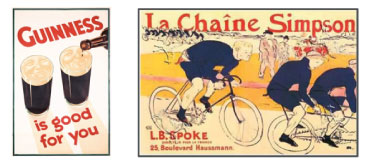Panos Dimitropoulos
The relationship between brands and consumers is constantly being renegotiated to fit new conditions. These are related to changing socio-economic and political parameters, shifting perceptions of the role of consumerism as well as increasing competition from a growing number of brands but also consumers’ familiarity and thus ‘immunity’ to promotional messages. So how can brands adapt to these new conditions and maintain loyalty and growth in such a fluctuating and demanding environment?
Brands need to fundamentally re-evaluate: from the way they view their broader role within society and construct philosophies and strategies to the way they do research, communicate and innovate. The key for such a shift in thinking and acting lies within culture. Brands need to perceive themselves not as mere money-making machines and vehicles of consumerism, but as intricate entities within the broader system of culture.
A Cultural Selling Proposition (CSP) encapsulates such a shift in branding. CSP enables brands to activate culture on their behalf and as such to establish deeper and more meaningful relationships with the consumers.
This is how Banks and McGee (1989) define the term culture: “Most social scientists today view culture as consisting primarily of the symbolic, ideational, and intangible aspects of human societies. The essence of a culture is not its artifacts, tools, or other tangible cultural elements but how the members of the group interpret, use, and perceive them.”
Culture has always been divided in two opposing poles: high culture (e.g. Fine Arts) and popular culture (e.g. TV, advertising). As it constantly evolves, what lies at the popular end frequently makes the passage into the high end with architecture, jazz, films, and graffiti being some examples.
This article examines the evolution of different propositions in branding and its ongoing relationship with the culture. It argues that at this specific point of time brands are also making this passage towards an amalgamation with culture.
A brief history of brand propositions: From USP to CSP
In the early stages, brand communication consisted of the absence of a specific strategic positioning, simplicity of form and content and directness in tone of voice. These characteristics were reflecting the early ‘exploratory’ stages of branding – a branding naivety if you will – as well as a new type of communication called advertising.
Nevertheless, even at such an early stage – and although at the time it was not realized – advertising was entwined with culture. From Toulouse Lautrec’s posters to Guinness’ specific graphic design aesthetics, advertising always held one foot firmly on the popular culture sometimes reaching out to higher levels of aesthetics achieving extraordinary results.
As consumerism progressed, the need for market differentiation, and hence more sophisticated branding techniques, created the Unique Selling Proposition. Branding was based on the product’s unique attributes and its competitive advantage. The role of communication was to highlight such distinctive attributes and through repetition create lasting associations in consumers’ minds.
The use of hard selling tone of voice, cold colours and centralized compositions signified extreme competitiveness, corporate order and rationality. USP belonged to a peak period of consumerism that was based on justification of value and purchase through a competitive advantage. It reflected a culture influenced by survival of the best: where Top Ten Charts, Awards, VIPs and Miss and Mr Universe thrived.
As consumerism acquired more pleasure-seeking characteristics, USP was replaced by Emotional Selling Proposition (ESP). Role of branding was to link a product with a specific consumer benefit instead of a product attribute. Role of advertising was to instigate a unique and intense emotional connection between product experience and consumers.
The characteristics of communication were warmer colours, asymmetry, sexual innuendos, and strong use of music signifying sensory stimulation escapism and indulgence. Advertisements became beautified objects being hanged on the walls and competing for awards. ESP reflected a period of consumerism excess that focused on seducing instead of convincing. It reflected a culture of self-indulgence, synaesthesia and distraction expressed through club culture, 24 hour reality TV and celebrity chefs.
USP and ESP reflected the changing cultural conditions of their times standing as evidence of the corresponding evolution of consumerism. And herein lays the next evolutionary step. Nowadays, culture has become much more important to consumers. They use it more in order to define themselves (from hipsters in Europe to cosplay in Asia), they produce more of it through technological enablement and appreciate it more due to increasing imagination and cultivation of aesthetics.
Culture ends up incorporating consumption in its repertoire of expressions and hence brands in its repertoire of meaning. At the same time, brands shift towards more ethical, pragmatic and realistic values and attributes. As a result, ads adopt a more culturally active role and are transformed into culture themselves rendering their products as indistinguishable from culture.
In a world where established culture (universities, museums, countries) becomes branded, branding reciprocates by moving towards established culture. This is how Cultural Selling Proposition (CSP) originates.
Brands become active agents in pushing the cultural agenda: they link their value system with emergent cultural meanings, transform themselves into active ambassadors of culture and thus tune into the cultural zeitgeist of their consumers. Culturally tuned brands are interacting with consumers in new ways, places and moments by telling stories that are part of culture and hence are more truthful and appealing. Consumers purchase branded products in order to experience and be associated with these stories and enhance their own cultural identities.
Brand communication becomes an end in itself acquiring autonomous character, substantial aesthetic quality and unique cultural significance. This affects not only content, but also media. Traditional media are on decline along with their influence. Emergently, brands are tapping into media that interact with consumers in real time and in their reality. Ambient advertising, events, pop-up stores and even certain digital media become the appropriate expressions of CSP as they act as agents of cultural authenticity and meaningful, experiential interaction with consumers.
The passage from USP to ESP and now CSP marks the historical maturing of branding. Culture and branding become inseparable in their definition and perception. Brands become cultural entities and communications become vehicles of culture.
 Red Bull is an early stage example of CSP having already been turning their brand communication into cultural activities. Instead of creating fictional stories, Red Bull employs reality to promote itself, creating documentaries, having athletes and everyday people as its protagonists.
Red Bull is an early stage example of CSP having already been turning their brand communication into cultural activities. Instead of creating fictional stories, Red Bull employs reality to promote itself, creating documentaries, having athletes and everyday people as its protagonists.
From the Red Bull Flugtag to Formula 1 races to record-breaking events, the brand employs the cultural fascination of flying and speed celebrated in such events as a symbol to communicate extreme energy, freedom and breaking limits. Coming to a point where instead of associating Red Bull with such events, the cultural idea of these events is inextricably linked with Red Bull – just try to think of the field of extreme games without Red Bull.
We can find strong locally relevant brands in many markets worldwide, including China. For example, Herborist is a Chinese cosmetics brand that taps into the new cultural renaissance of China inspired by traditional values and knowledge. It fuses wisdom of traditional Chinese medicine with the effectiveness of modern technology to create products that capture the best of both worlds. Herborist gives the concept of Yin-Yang a contemporary twist, one that consists of past and future, nature and technology.
This brand communication uses signifiers of tradition on one hand (Traditional Chinese Medicine ingredients, intricate circular patterns, Yin-Yang symbol, vertical writing, and those of modernity on the other (futuristic design, neon colour hues, transparency, animation and minimal compositions) to create the cultural connotation of ancient wisdom infused with technological expertise.
Herborist transcends the commercial sphere and stands as symbol of the emerging cultural momentum of China that combines pride of the past with optimism for the future. This is how it manages to create the sense of continuity and timeless-ness.
Role of semiotics in Cultural Branding
Semiotics takes a prominent place in research as one of the most effective tools of understanding communication and culture and their effects in shaping consumers’ perceptions and understanding. It treats all that it analyses as equal cultural texts: forms of communication conveying cultural meanings. In this way, branding can effortlessly blend in with culture: advertising can be easily inspired by animation, packaging can simply be guided by architectural design, retail spaces can simulate art gallery spaces and so on.
Semiotics can also deconstruct brand values to uncover their broader socio-cultural dynamics and current momentum as well as how to express those through specific visual compositions, music, language, shapes etc. Furthermore, it can monitor how these expressions evolve linking emergent signifiers with emergent meanings. Semiotics is the key that activates CSP: from the formulation of deep insight to the creation of clearer creative briefs that tie strategies close to executions to ensure cultural relevance, clarity and freshness.
In the hands of the marketing and branding professionals, semiotics can become a multifunctional tool for a diagnosis, discovery, strategy formulation, creative execution and innovation all in one. Semiotics is a skilled cultural advisor helping brands construct an effective and relevant CSP and elevate themselves into cultural icons.
Panos Dimitropoulos is Cultural Insight Lead Asia – Added Value




